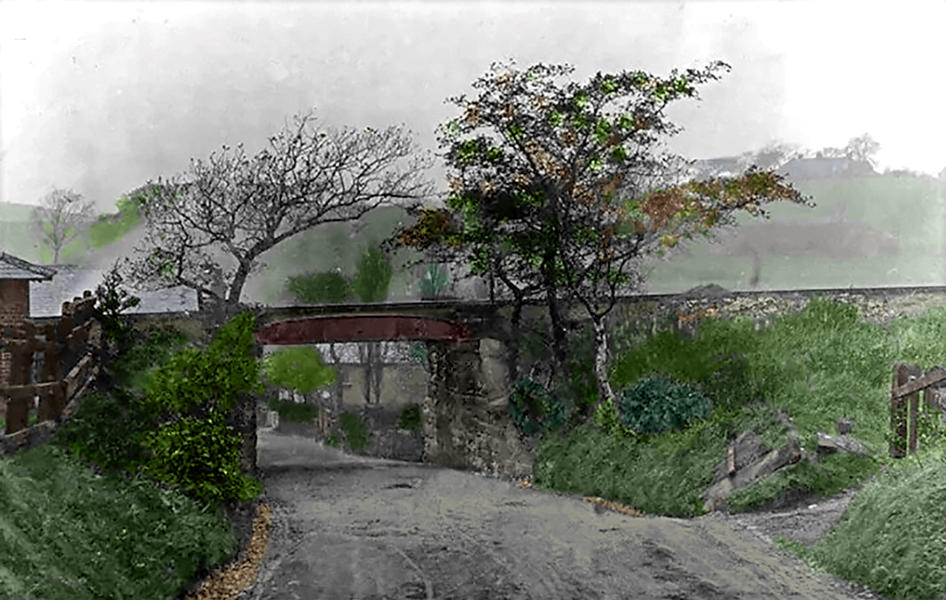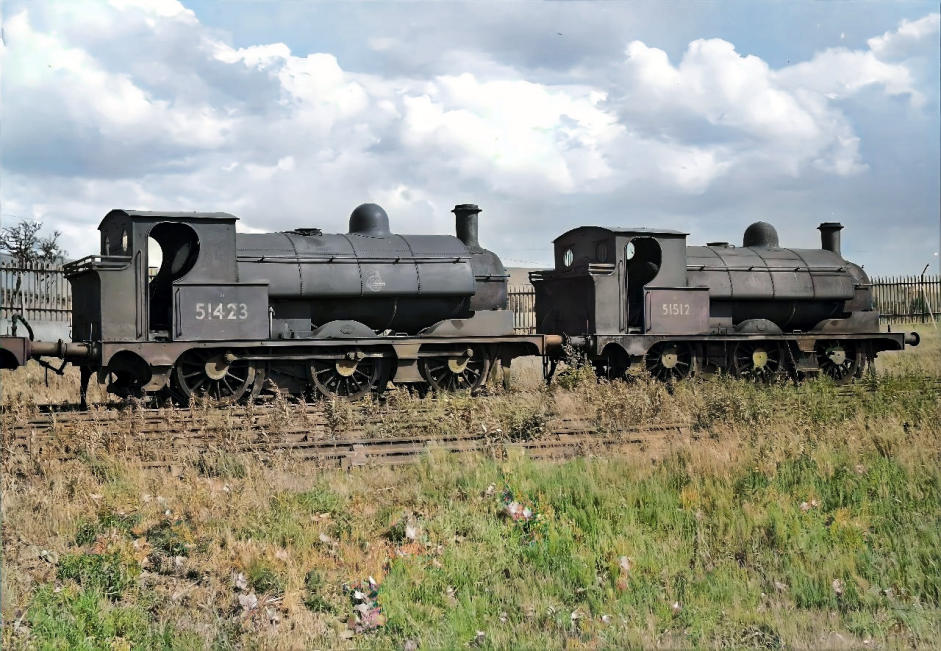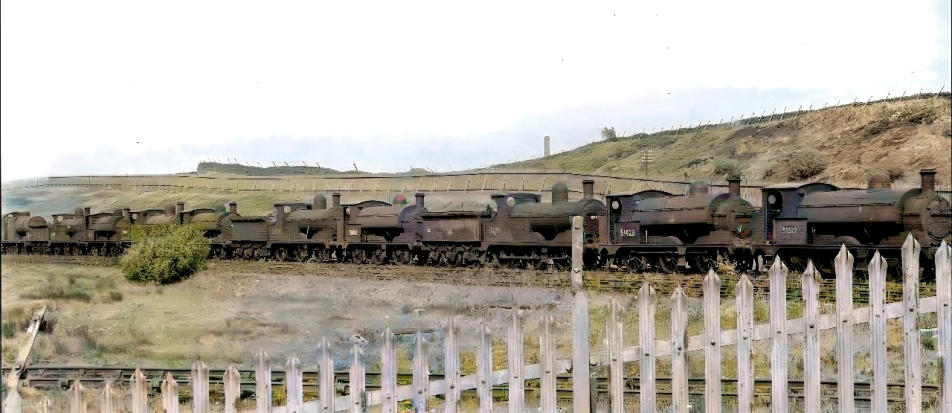The embankment between No1 and No2 lodges. The cutting to Heapey Station
swings left at the end embankment before doing a sweeping right curve to the station
Click this photo to enlarge

.Map from the OS first edition 1:2500 series showing the siding coming from Heapey Station
Plan showing the complex track arrangement inside the Bleach works complex
Heapey ROF sidings.
© www.white-coppice.co.uk 2022
Place mouse over photo to colourise
The bridge over Higher House Lane carrying the line in to the factory (to the left) from Heapey Station (to the right) The house at the far side of the bridge was called Spring Wood
Cottage and was demolished in the late 1960s or early 1970s
The remains of the bridge that crossed Higher House Lane. When the housing estate
was built 30 feet or more of soil was removed, so the track bed on the left is no more.
Click to enlarge
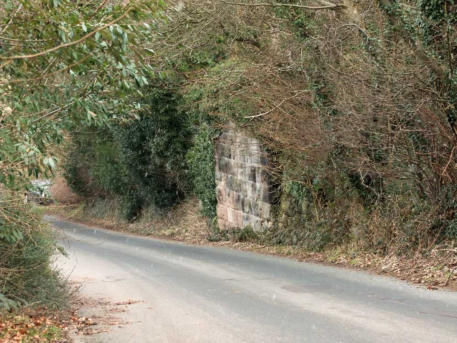
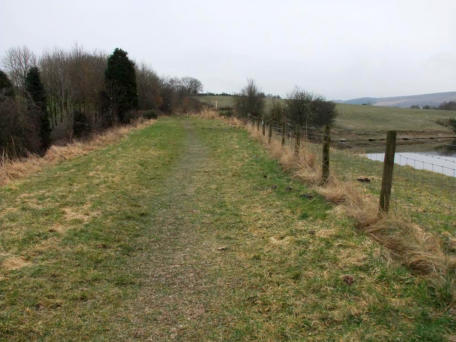
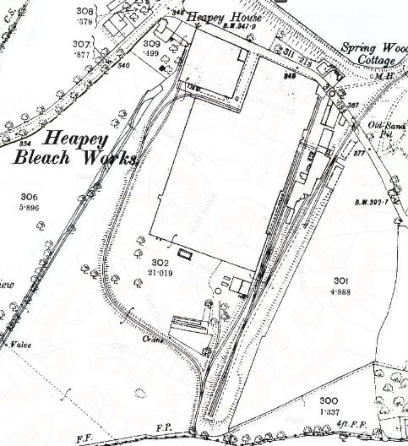
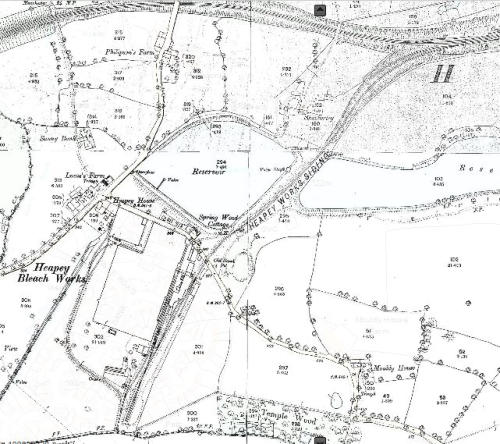

Heapey Bleach Works Sidings
……was more like a branch line than a siding, it was more than half a mile to reach the factory. West of Heapey
Station beyond the signal box, the siding veered of to the left of the mainline. It immediately entered a 300 yard long
cutting. When the line emerged from the cutting it was on an embankment with Heapey No2 lodge to the left and
Heapey No1 far below on the right. Then a bridge took the track over Higher House Lane before entering the large
works complex. Once inside, sidings surrounded the factory on three sides with a series of complex shunting
manoeuvres required to move goods around.
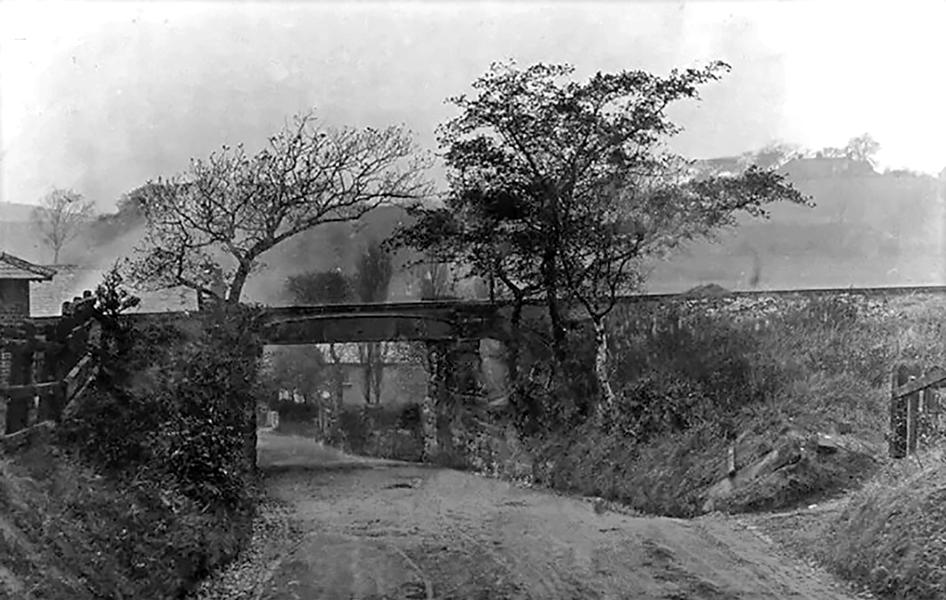


This postcard from 1908 shows the immense size of the original factory which was gutted by a fire in 1944. Much of it never rebuilt. The photo shows the railway line encircling
the factory and also highlights the gradient of the line out of the factory. The train in the distance has just crossed the bridge and is beginning to cross the embankment between
the lodges. The cutting to Heapey Station is seen far left edge of picture
ROF Heapey Sidings
The sidings and line into the ROF were built sometime between 1938 and 1943. The Depot was classed as a storage depot, but it it also thought that some top secret atomic
work was carried out here, in particular the extraction of the Lithium isotope Li-6 for detonators of nuclear weapons as part of "Project Crystal" during the late years of WW2 and
after the war during the Cold War years.
From the main down line, a siding swung away to the left and crossed the lane that leads to Logwood Cottages and entered the gates of the ROF. Before entering the ROF there
was another set of points that lead to four more long sidings that ran parallel with the main line -but hidden from it by a tall hill side with high security fencing running all the way
round the sidings. Within the ROF there was an engine house to house a shunter. In the late 1950s and early 1960s the sidings were used to store old steam engines until they
could be scrapped
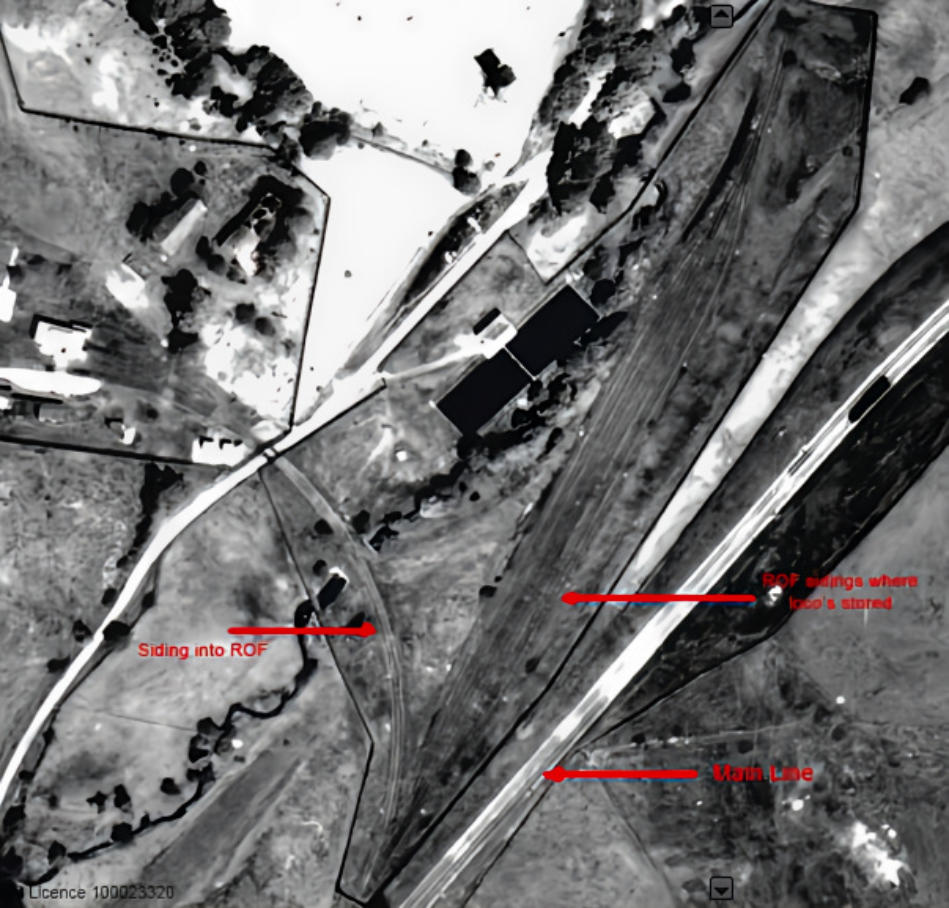
An eerie photo with old engines in the mist. This photo was taken on 15/2/1959 - A line of old Lancashire & Yorkshire engines stand silently in the ROF sidings. The main line is
on the other side of the hill to the left ( © Brian Hilton )
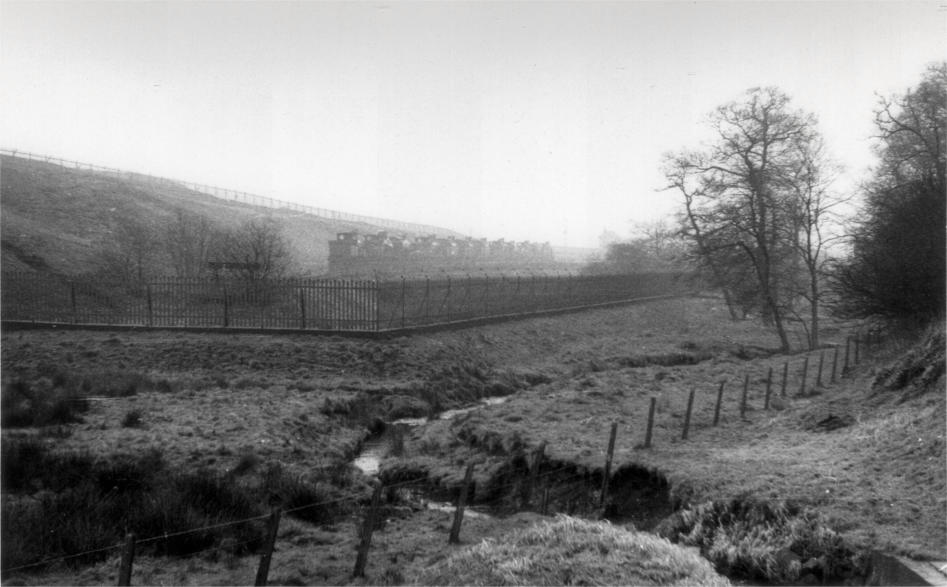
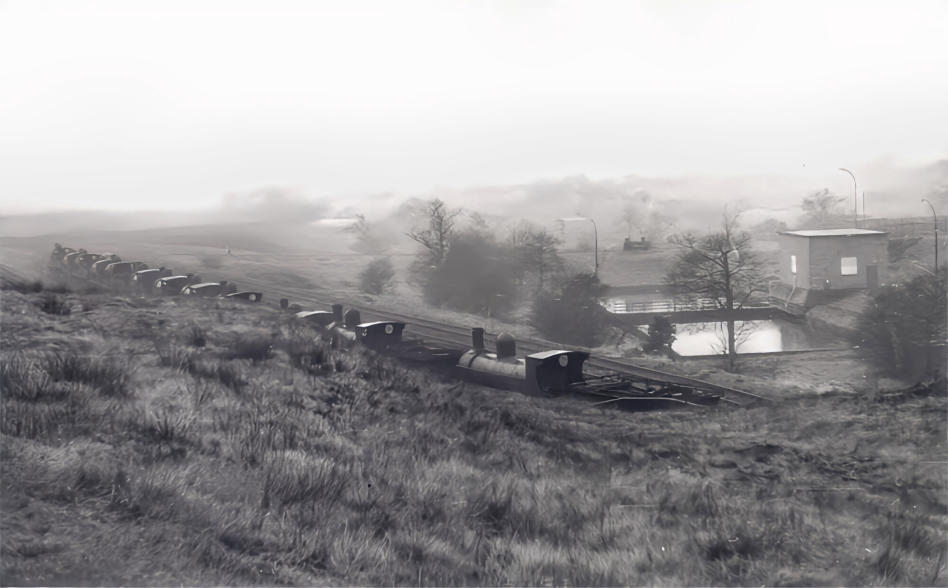
This is taken from the hill in the photo above. The line into the ROF can just be seen beyond the two water pools ( © Brian Hilton )
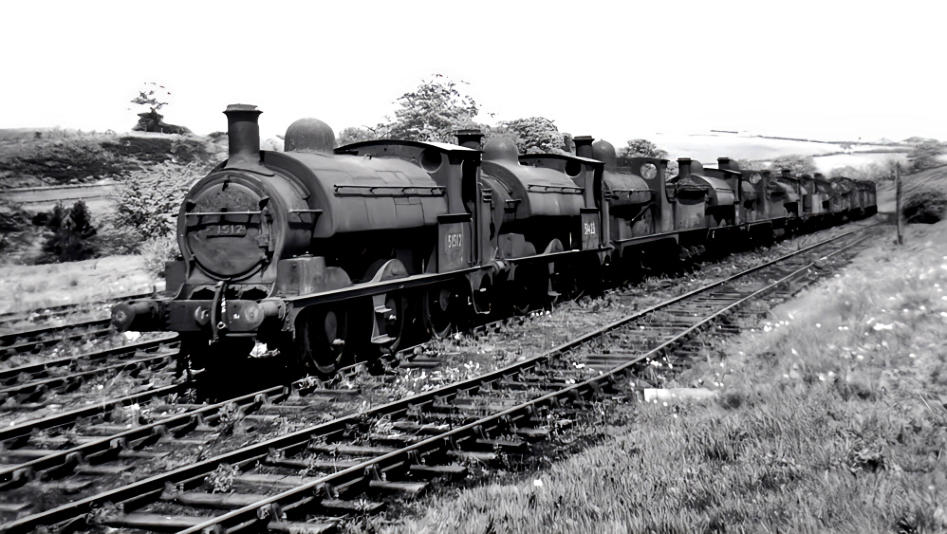
The line of engines taken from the east of the sidings. The ROF was to the left of the photo and the mainline to the right
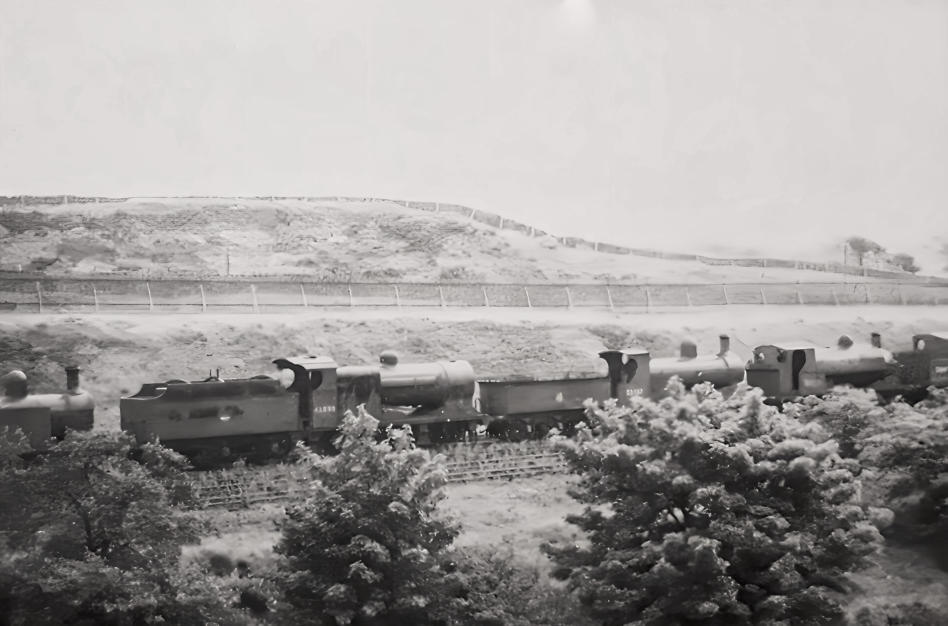
Courtesy of: @ROFChorley
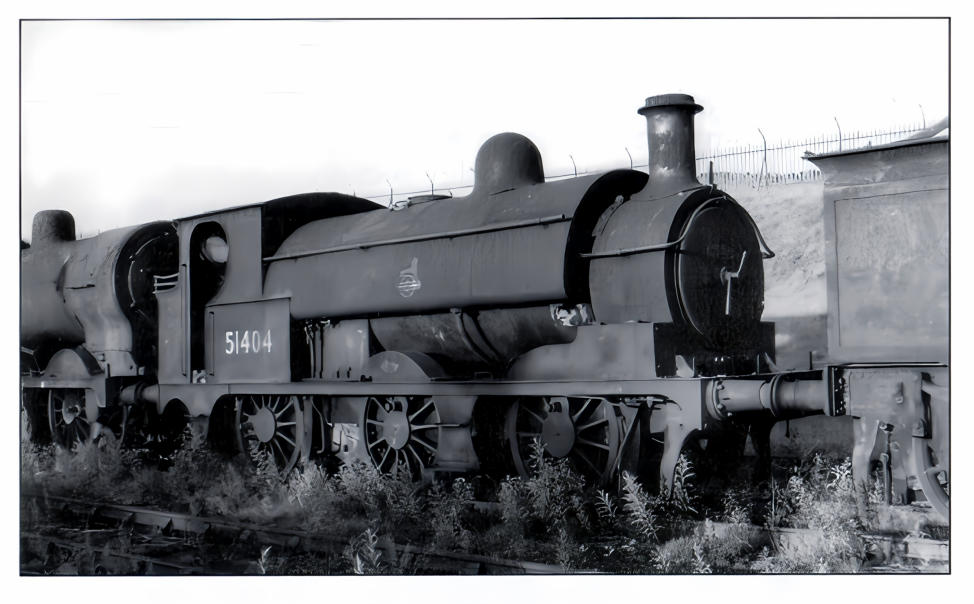
1960 - This Ex LYR engine No 51404 stands in a line with other loco's. This engine was built in 1883 and withdrawn in 1959 ( © AG Ellis)
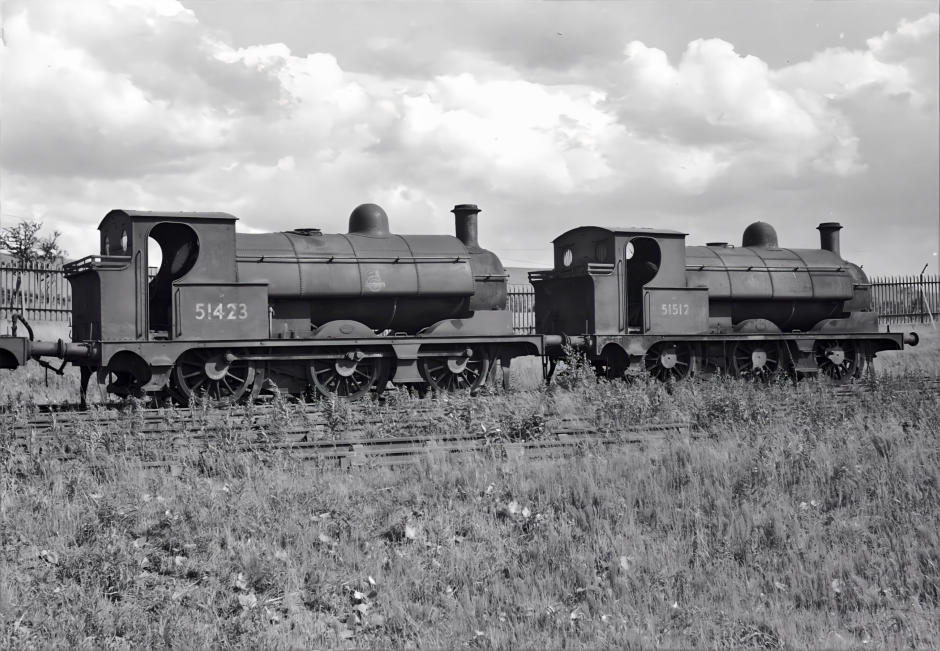
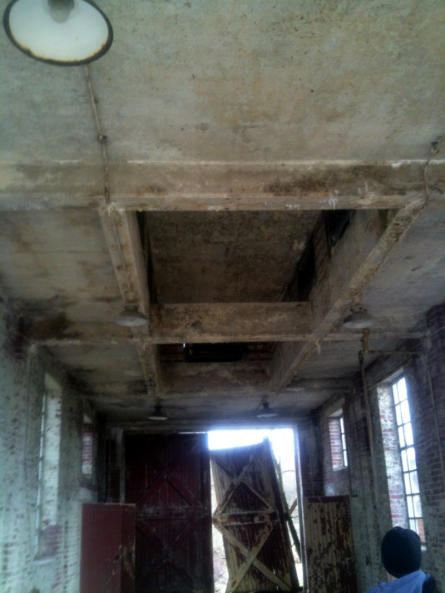
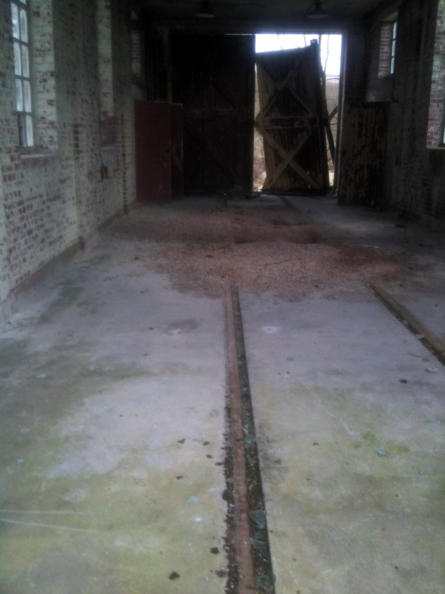
26/12/59 sees Ex L & Y Class 5 2-4-2T 50712 awaiting its fate. Originally numbered 1263 in L&Y days, it was renumbered 10712 when it entered LMS service. When British Rail
was formed it was again renumbered, this time becoming 50712. It was built in 1895 and withdrawn in the March of 1959 and taken to Heapey ROF. Sometime in the Spring of
1960 50712 made its last journey to Central Wagon Co of Wigan where it was scrapped in June. Behind it in the line is an unidentified Ex Midland Railway 0-6-0 4F
The L & Y 0-6-0STs were rebuilds of Class 23 Barton-Wright engines from circa 1877. In the photo 51404 stands in front of an ex Midland 4F 0-6-0
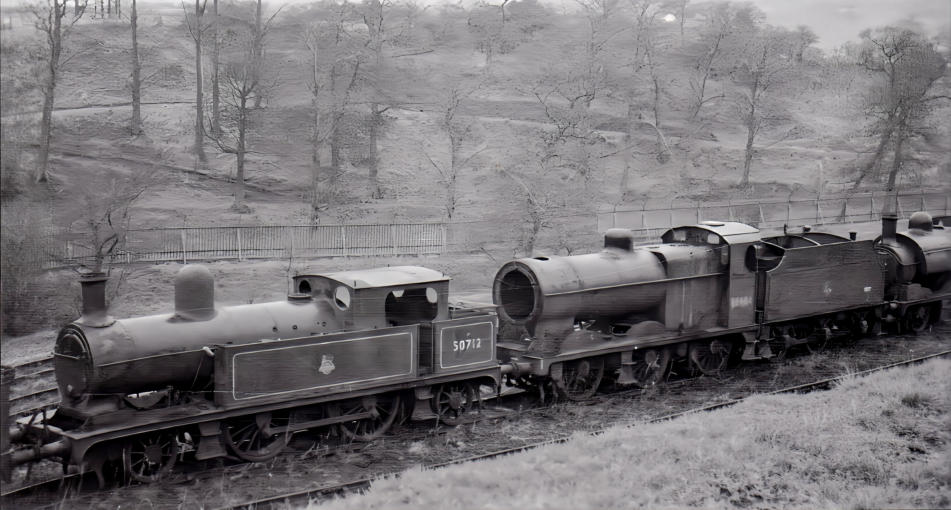
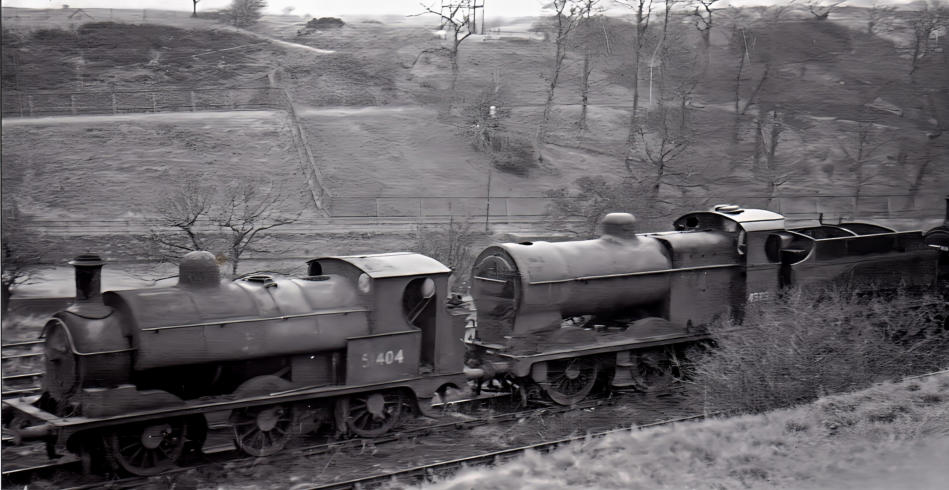
A lonely 40178 stands alone in the sidings on 9/4/1961 ( © Tony Gillett)
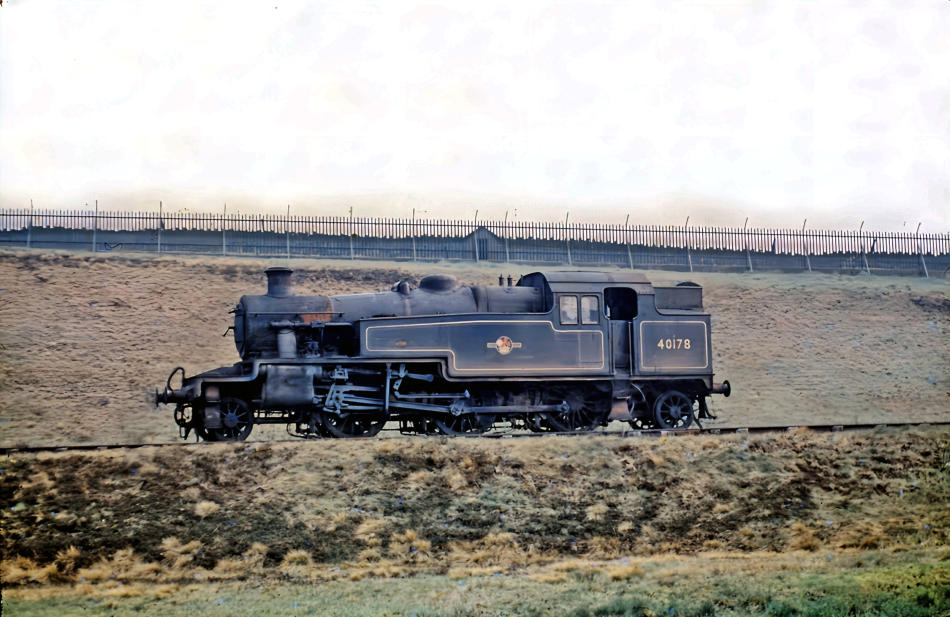

Another view of stored locos at Heapey. The line in the forefront of the photo is the line into the ROF site.
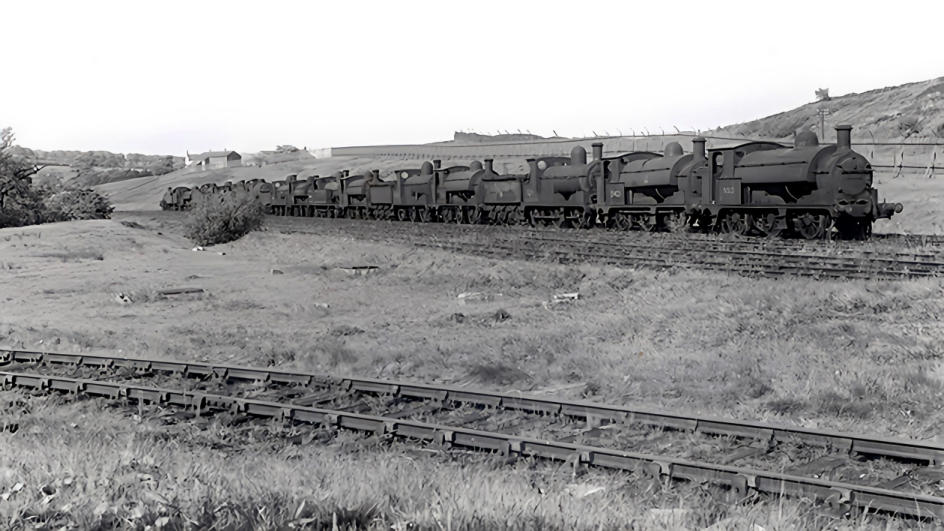
MOUSE OVER PHOTO reveals colourised photo
Aspinall Class 23 0-6-0ST Nos 51423 and 51512 on 07/06/1959 (Neville Stead Collection)
51423 was built in October 1895, withdrawn 31/12/1958, stored at Heapey from Dec 1958 to Nov 1959 and cut up July 1960
51512 was built in October 1882, withdrawn 31/7/1958, stored at Heapey from Dec 1958 to Nov 1959 and cut up Sep 1960
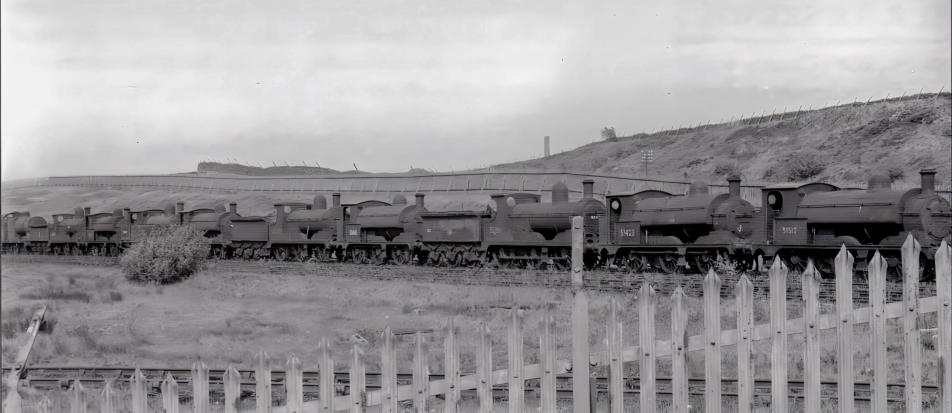
MOUSE OVER PHOTO reveals colourised photo
2013 - inside the old engine shed showing floor and ceiling. This has since been demolished ( © Sneaky 28DaysLater.co.uk)
